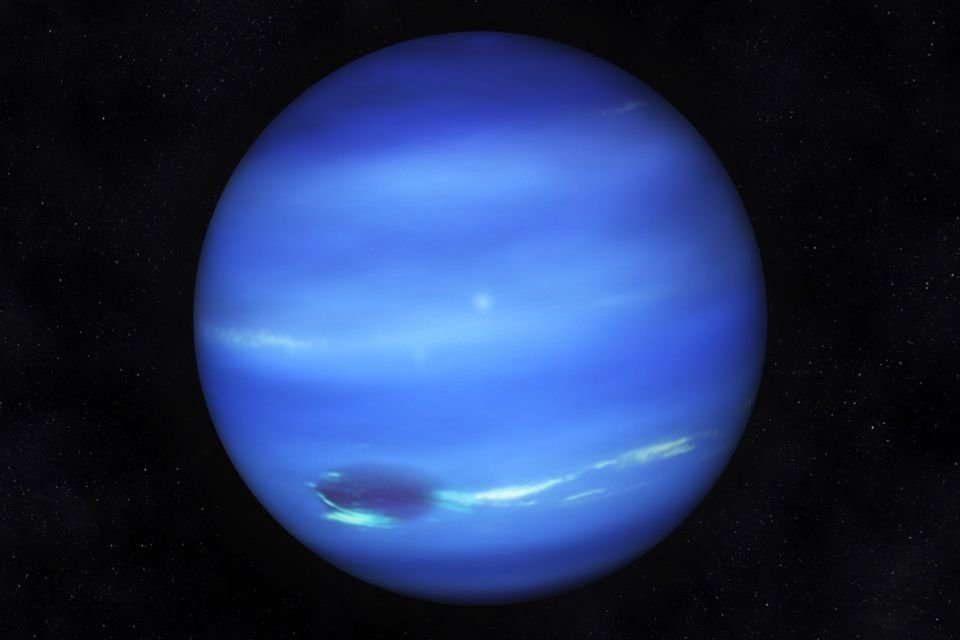Clouds around Neptune have “mysteriously” disappeared in recent years, according to a study published in the scientific journal Icarus. Experts still don’t fully understand why the planet is changing, but data analyzed during the new research show: changes may have a strong relationship to the cycle of our Solar System.
From the observations collected in 2019, scientists began to notice that clouds were disappearing from Neptune, and in 2020 the planet was almost cloudless.. At this time, the clouds have not yet reappeared. After analyzing data collected by the Hubble Space Telescope in 1994, they detected similar events and suggested that this phenomenon was part of a periodic cycle.
In a study conducted at the University of California at Berkeley in the United States, a team of scientists used data collected by the WM Keck Observatory and the Hubble telescope between 1994 and 2022. Right now, The ice giant still has a few clouds in an area at its south pole. After further analysis, the scientists discovered the possible relationship with the Solar System cycle.
“Even four years later, the images we took last June showed that the clouds had not returned to their former levels. “This is extremely exciting and unexpected, especially since Neptune’s previous low cloud activity period was not so dramatic and long-lasting,” said study leader and Harvard University astronomer Erandi Chavez.
Neptune Clouds and Solar System
Different data show that the amount of clouds on Neptune changes every 11 years. Apparently, this cycle is synchronized with solar activity, because About every 11 years, the Sun’s magnetic fields reverse and the star experiences a spike in flares, sunspots, and coronal mass ejections.
As the sun passes through this period, it emits more intense ultraviolet radiation; analysis shows that About 2 years after the start of this emission, clouds begin to appear on Neptune; then the clouds start to disappear. Additionally, the team also proposes other minor correlations.
Because it is one of the most distant planets in the Solar System, humanity has yet to understand it as much as those closest to Earth. For now, astronomers suggest that there are processes in Neptune’s atmosphere that we still don’t fully understand.
“This remarkable data gives us the strongest evidence yet that Neptune’s cloud cover is related to the Sun’s cycle. Our findings support the theory that the Sun’s ultraviolet rays, when strong enough, can trigger a photochemical reaction that produces Neptune’s clouds. ” The study’s author and astronomer, Imke de Pater, of the University of California, Berkeley.
Stay up to date with the latest astronomical discoveries on TecMundo!
Source: Tec Mundo
I’m Blaine Morgan, an experienced journalist and writer with over 8 years of experience in the tech industry. My expertise lies in writing about technology news and trends, covering everything from cutting-edge gadgets to emerging software developments. I’ve written for several leading publications including Gadget Onus where I am an author.












